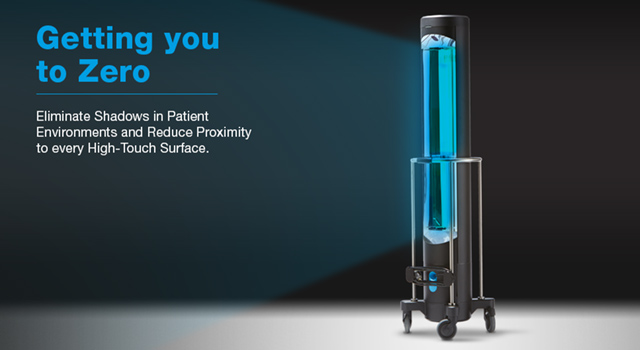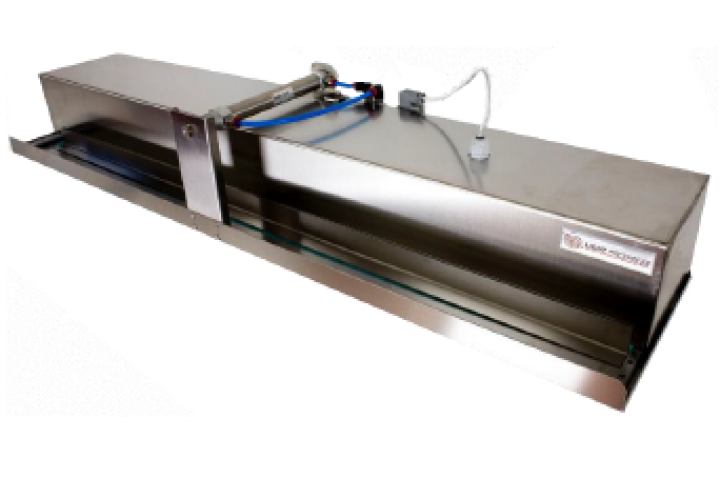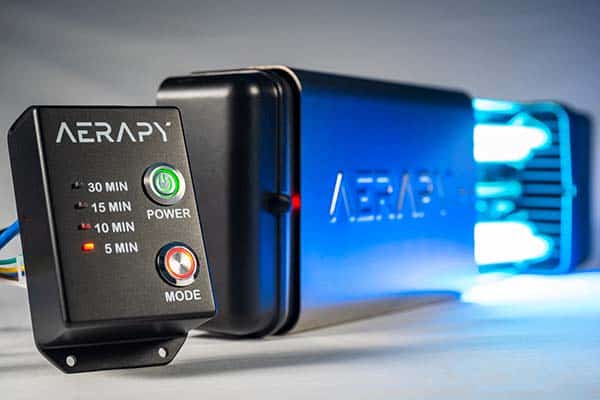UV Disinfection: The Cutting-Edge Innovation Changing Hygiene Practices
In the world of cleanliness techniques, one technology has arised as a game-changer: UV sanitation. With its capability to eliminate unsafe pathogens, this advanced technology is changing the way we approach cleanliness and health. How does UV disinfection work, and what are the advantages it offers? From medical care setups to food handling, UV sanitation is making its mark in different industries. In this conversation, we will certainly check out the intricacies of this transformative technology and look in advance to its encouraging future.
How UV Sanitation Functions
UV disinfection works by using ultraviolet light to ruin or inactivate bacteria, supplying a highly efficient and chemical-free method of hygiene. This innovation takes advantage of the power of short-wavelength UV-C light, which can damaging the DNA and RNA of microbes, hence rendering them unable to trigger and recreate injury.
The process starts with the setup of UV disinfection systems, which contain UV lamps that produce UV-C light. These lights are purposefully positioned in areas where microbial contamination is a concern, such as water therapy plants, medical facilities, research laboratories, and food processing facilities.
When bacteria are exposed to UV-C light, the photons permeate their cell wall surfaces and reach the DNA and RNA within. The high-energy UV-C photons disrupt the genetic material by creating bonds in between surrounding nucleotides, bring about the formation of thymine dimers. These dimers prevent the microorganisms from duplicating, making them harmless.
UV disinfection is highly efficient versus a vast array of microbes, including parasites, microorganisms, and infections. It is especially effective versus waterborne pathogens like E. coli, Giardia, and Cryptosporidium. In addition, UV disinfection is a chemical-free method, removing the demand for potentially hazardous anti-bacterials and decreasing the risk of harmful disinfection byproducts.
Benefits of UV Disinfection
UV disinfection offers countless advantages in the field of sanitation, making it a highly preferred method for successfully removing unsafe microorganisms. Unlike standard sanitation approaches that count on chemicals, UV disinfection utilizes ultraviolet light to ruin the DNA of microorganisms, making them incapable to replicate and cause infections.

UV disinfection is likewise highly functional in its applications. It can be used in numerous setups, consisting of health centers, colleges, food handling centers, and water therapy plants. UV disinfection systems can be easily integrated right into existing cleanliness techniques, supplying an extra layer of security versus infectious illness.
In addition to its performance and convenience, UV sanitation is also ecologically friendly. It does not generate any kind of hazardous byproducts or residues, making it a lasting and safe method for sanitation - uv surface disinfection. Additionally, UV sanitation requires minimal upkeep and has a long life-span, resulting in cost savings over time.
UV Sanitation in Healthcare Setups
In medical care settings, UV disinfection has actually arised as an innovative approach for successfully getting rid of hazardous bacteria. The usage of UV light to decontaminate surface areas and equipment has actually acquired popularity as a result of its capacity to give an extra layer of defense versus virus. UV disinfection works by producing ultraviolet light at a details wavelength that is deadly to microorganisms, viruses, and various other microbes. This technology uses a number of advantages in health care settings.
Firstly, UV sanitation is a non-chemical technique, making it an eco friendly alternative contrasted to standard disinfection techniques that typically entail making use of rough chemicals. Using UV light removes the need for chemical disinfectants, lowering the danger of unsafe deposit or chemical direct exposure to both patients and medical care employees.
Additionally, UV disinfection is highly effective in eliminating a wide variety of microbes, including drug-resistant microorganisms such as MRSA and C. difficile. It supplies a constant and trustworthy sanitation process, making sure that all surface areas and devices are extensively sanitized, also in hard-to-reach locations.

UV Disinfection in Food Handling
The application of UV disinfection extends past health care settings and finds considerable worth in the realm of food processing. uv surface disinfection. UV sanitation technology is ending up being significantly preferred Check This Out in the food sector as a result of its ability to properly get rid of harmful microorganisms and boost More Bonuses food safety and security
One of the primary benefits of UV sanitation in food processing is its capability to target a vast array of microbes, consisting of germs, mold and mildews, and viruses. By utilizing UV light at details wavelengths, it is feasible to interfere with the DNA and RNA of these microorganisms, rendering them not able to duplicate or cause harm. This innovation can be applied to different stages of the food processing chain, including surface sanitation, devices sanitation, and water treatment.
UV sanitation provides a chemical-free and non-thermal method of disinfecting food. Unlike traditional disinfection approaches that rely on chemicals or warm, UV technology does not leave any type of residue or modify the taste, appearance, or dietary value of the food. This makes it a suitable option for markets that need stringent adherence to high quality standards.
Furthermore, UV sanitation systems are easy to operate and mount, calling for minimal maintenance. They can be integrated right into existing handling lines without creating considerable interruptions to the manufacturing process. Furthermore, UV systems have a quick therapy time, permitting for continual handling and reducing downtime.
The Future of UV Disinfection

One location where UV disinfection is anticipated to make considerable innovations remains in the field of healthcare. With the surge of antibiotic-resistant microorganisms and the need for a lot more reliable disinfection techniques, UV light has the potential to play a crucial duty in decreasing healthcare-associated infections. UV sanitation systems can be used to sanitize surface areas, devices, and even the air in medical care facilities, helping to avoid the spread of damaging pathogens and enhance client safety and security.
An additional industry that might gain from improvements in UV disinfection check my source innovation is the food sector. UV light has currently confirmed to be an efficient method for decontaminating foodstuff and reducing the danger of foodborne illnesses. As technology improves, we can expect to see a lot more effective and affordable UV sanitation systems being applied in food handling plants, guaranteeing that the food we take in is risk-free and devoid of damaging bacteria.
Verdict
To conclude, UV disinfection is an innovative modern technology that is changing sanitation methods in healthcare settings and food processing. By utilizing UV light to kill or shut down bacteria, it uses countless benefits such as performance, effectiveness, and safety. With continuous improvements in this field, UV disinfection holds great prospective for the future of sanitation, giving a reputable and lasting option for keeping clean and sanitary settings.
UV sanitation is a chemical-free technique, getting rid of the requirement for possibly unsafe anti-bacterials and lowering the danger of damaging disinfection spin-offs.
Unlike traditional disinfection approaches that rely on chemicals, UV sanitation uses ultraviolet light to destroy the DNA of bacteria, providing them incapable to recreate and create infections. Unlike standard sanitation techniques that count on chemicals or warm, UV modern technology does not leave any kind of deposit or modify the taste, texture, or nutritional value of the food. As modern technology improves, we can expect to see much more reliable and cost-effective UV disinfection systems being implemented in food handling plants, ensuring that the food we consume is risk-free and complimentary from damaging germs.
In final thought, UV disinfection is an innovative innovation that is changing sanitation practices in healthcare settings and food processing.